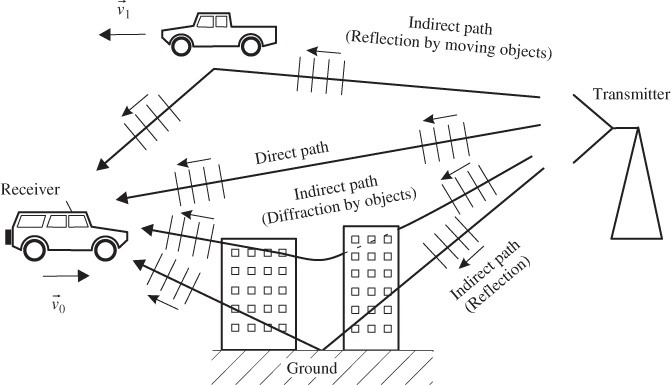8.3 Path Loss Models
The previously discussed basic propagation models consider isolated effects like attenuation of air, plane earth reflection and one-dimensional propagation through a layered wall. In most practical propagation scenarios (e.g. macrocells of cellular networks in urban environments or indoor coverage of wireless networks) more refined models are needed.
8.3.1 Multipath Environment
Figure 8.18 shows a mobile receiver and a fixed transmitter in an urban environment. Electromagnetic waves may propagate on different paths from transmitter to receiver (multipath environment). First, a direct path (line of sight, LOS) may be possible. Next, reflections from fixed and mobile objects and ground may contribute to the receive signal. Furthermore, waves are diffracted or attenuated by objects (e.g. buildings or hills). At the receiver location all these signals from different paths superimpose constructively or destructively due to different path lengths and phase shifts. Finally, objects, transmitter and receiver can generally be mobile, resulting in a time-dependent and frequency-selective communication channel.
Figure 8.18 Multipath propagation in complex environment.

If a receiver in a rural or urban environment moves through the coverage area of a base station antenna the receiving signals vary with distance due to general path loss and interfering objects. In general ...
Get RF and Microwave Engineering: Fundamentals of Wireless Communications now with the O’Reilly learning platform.
O’Reilly members experience books, live events, courses curated by job role, and more from O’Reilly and nearly 200 top publishers.

